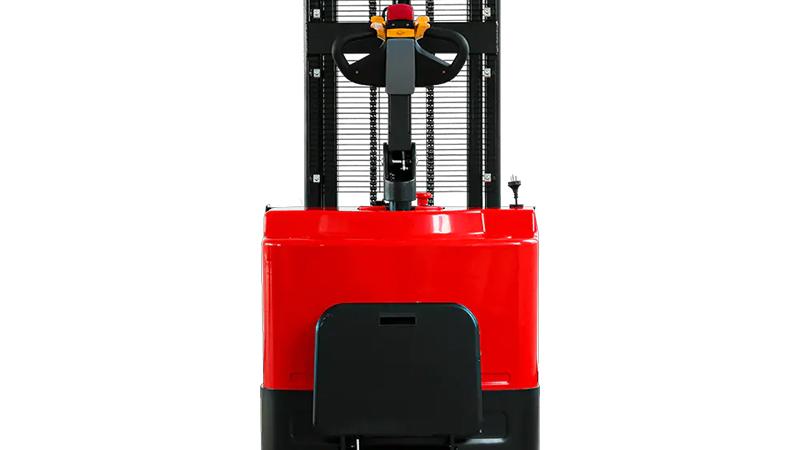In the relentless engine of global supply chains, where every second and every cent counts, the choice of material handling equipment becomes a pivotal strategic decision. At the heart of countless warehouse and distribution center operations lies the humble yet indispensable stacker, a machine tasked with the vital role of lifting and moving palletized goods. However, a significant fork in the road presents itself to operations managers and business owners: the manual stacker versus the electric stacker. The initial price tag often serves as the primary differentiator, but this only scratches the surface of a much more complex financial and operational equation. A basic manual pallet stacker, operating purely on human hydraulic power, can represent a remarkably low barrier to entry, with costs typically ranging from a few hundred to around two thousand dollars, depending on its capacity and build quality. This minimal capital outlay makes it an attractive proposition for small businesses, operations with infrequent lifting needs, or those operating on an extremely tight budget. The appeal is straightforward: no charging, minimal maintenance, and a simple, robust design that is easy for any employee to operate with minimal training.
Conversely, stepping into the realm of electric stackers introduces a substantially higher initial investment. An entry-level pedestrian-type electric stacker, which requires the operator to walk behind it, can start at a price point several times that of its manual counterpart, often ranging from three to six thousand dollars and escalating quickly for models with higher capacities, greater lift heights, or enhanced features like a built-in platform for the operator to ride on. This upfront cost is the most immediate and palpable factor, creating a clear financial hurdle. The electric stacker is not just a tool; it is a system, requiring a supporting infrastructure of battery chargers and a regimen of planned maintenance. For a small operation, this initial expenditure can be daunting, seemingly justifying the choice of the more affordable manual option. The decision, based purely on purchase price, seems logical. However, this perspective fails to account for the long-term calculus of total cost of ownership (TCO), which encompasses not only the acquisition cost but also the ongoing operational expenses, the impact on human labor, and the broader implications for throughput and productivity, which ultimately define a warehouse's profitability and scalability in a competitive market.
Beyond the initial purchase price, the true cost narrative unfolds across the dimensions of labor, productivity, and operational scalability. The manual stacker, while cheap to acquire, places the entire physical burden of movement and lifting onto the operator. This human-powered operation has profound implications. Firstly, it is inherently slower, as the pace is limited by an individual's walking speed and stamina. Over the course of a full shift, fatigue sets in, leading to a natural decline in productivity, increased risk of product damage from tiredness, and a higher potential for musculoskeletal injuries, which can translate into costly workers' compensation claims and absenteeism. The cost of the manual stacker, therefore, is partially offloaded onto the operator's body and the company's potential liability. In high-volume or fast-paced environments, the limitations of a manual stacker can create a significant bottleneck, constraining the entire workflow and limiting the operation's overall output capacity. It is a solution that scales poorly; to move more goods, a business must simply hire more people and buy more stackers, leading to a linear and often inefficient increase in labor costs.
The final decision in the manual versus electric stacker debate is not a one-size-fits-all answer but a strategic choice dictated by the specific contours of an operation's needs, volume, and vision for the future. For a small retail backroom, a startup with unpredictable flux, or a facility where pallet movement is a sporadic task, the manual stacker's low cost and simplicity make it an economically rational and perfectly adequate solution. Its value proposition is its affordability and independence from complex upkeep. However, for any business experiencing consistent daily pallet movement, operating in a medium to high-volume environment, or aiming to scale its operations, the electric stacker emerges as the unequivocally superior long-term investment. The higher initial capital expenditure is not merely a cost but a strategic deployment of capital designed to drive down operational expenses, boost capacity, and future-proof the operation against labor market challenges. In today's landscape, where efficiency and speed are paramount competitive advantages, the choice is increasingly leaning towards electrification. The question for modern businesses evolves from "Can we afford an electric stacker?" to the more pressing and strategic "Can we afford the limitations of a manual one?" The true cost, therefore, is measured not in the invoice amount, but in the opportunity cost of slower operations and the physical toll on a company's most valuable asset—its people.
Post time:Oct.22.2025



